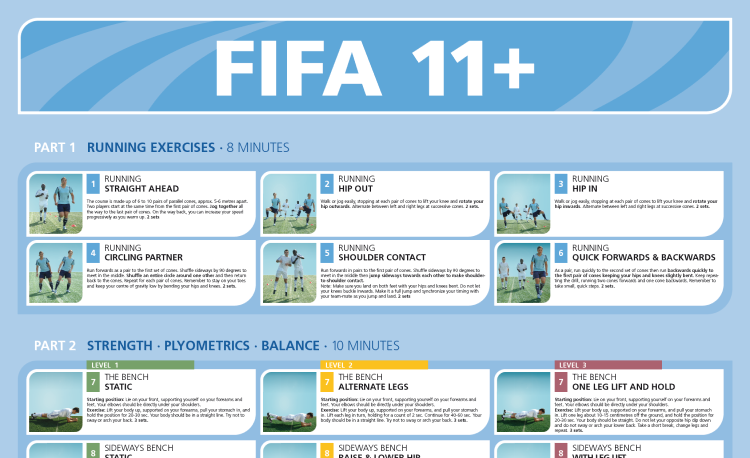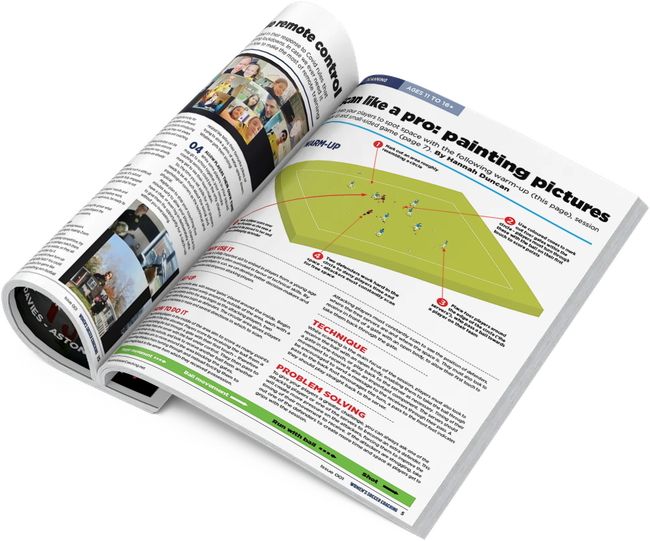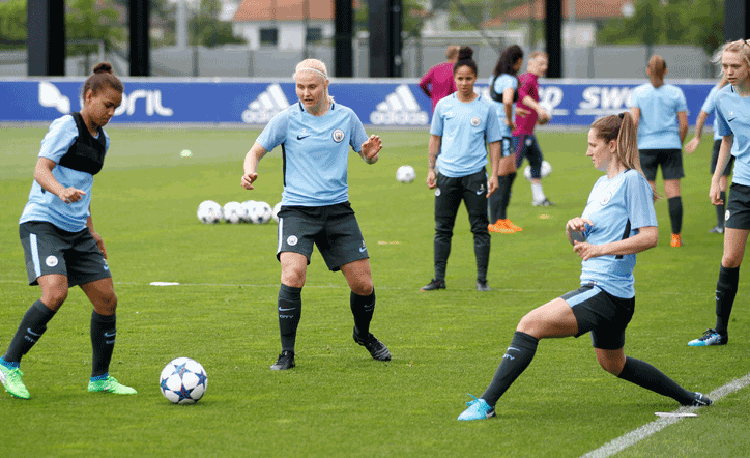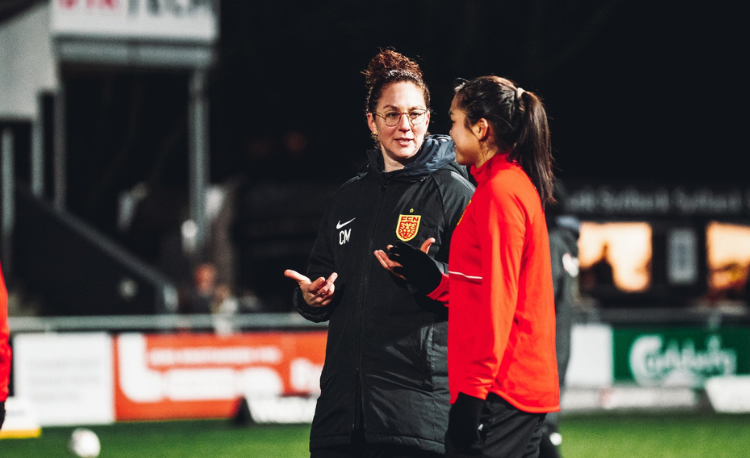You are viewing
1 of your 3 free articles
How to build and maintain physical resilience
From better warm-ups to movement quality, strength and conditioning specialist Erica Suter Mulholland provides her advice on reducing chance of injuries.
Injury prevention can be a misleading term.
More often than not, coaches and players belive that ’injury prevention’ is a magical, stand-alone program filled with balance drills, Bosu balls and instability pads.
As a soccer performance coach, I often get asked what I do for injury prevention with my athletes.
As much as I want to say that everything my athletes do can fall into the category of injury prevention, I don’t. But the truth is that, while balance drills are a part of injury prevention, they are just a small component.
If soccer players were only performing balance drills during their off-field training, they would be doing their bodies and performance a major disservice.
Looking at the game of soccer, there’s a tremendous amount of high-intensity, muscle-fatiguing movements for a long period of time.
Therefore, it’s absurd to think simple balance drills will really do the trick of safeguarding our players from injury.
With that said, the best injury prevention is a comprehensive strength and conditioning program that addresses several pieces and is performed for the long haul.
Since preventing injuries is more than just balancing on Bosu balls, let’s explore what else is key for keeping soccer players healthy.
A proper warm-up
If coaches want to take immediate action on injury prevention, they can start by executing a proper warm-up.
I prefer the Fifa 11+ warm-up, because there is extensive research backing its ability to prevent injury.
A study in the British Medical Journal found that youth soccer teams which performed the 11+ warm-up at least twice a week had 37% fewer training injuries, 29% fewer match injuries and nearly 50% fewer severe injuries over their next 1,000 hours of play, compared with teams who continued using their usual warm-up.
Moreover, the Fifa 11+ warm-up takes less than 10 minutes to perform and is easy to do on the pitch before training and games.
This handy chart outlines the warm-up. It’s important to note that, despite its name, the warm-up is designed for players aged 14 and older.
A good warm-up must prepare players for the actions they will encounter in the game, address movement in all planes of motion and activate the muscles used for maximal speed sprinting and cutting.
The last thing we want is a player to go in cold and unprepared to run their first sprint or make their first change of direction at full speed.
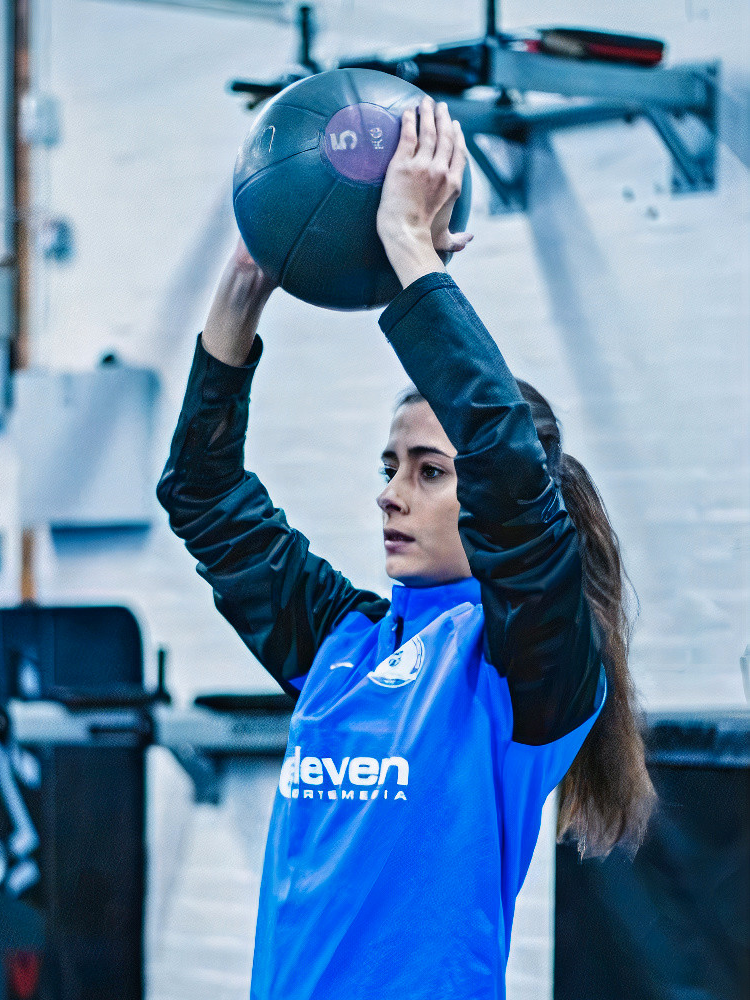
Movement quality
How do your players move? Elegantly or awkwardly? The latter is a problem.
The first thing I look at when it comes to movement quality is co-ordination. Can players sprint with contralateral, clean mechanics? How is their gait pattern? Are they favouring one side of their body and compensating on the other side?
Movement quality is important, especially for a soccer player who plays 90 minutes. We do not want someone who is overusing one side of their body and being unbalanced for that length of time.
Try some basic co-ordination drills that augment movement quality, shown in the video below.
Strength
As sport scientist Dr. Tim Gabbett says: “Athletes must load in order to handle load.”
To that end, balance drills will help players develop a basis of single-leg stability, but the law of diminishing returns will soon creep in.
Strengthening, then, becomes an important part of the injury-prevention recipe. So what are the best strength exercises for soccer players?
I like to program the major muscle groups involved in all the actions of soccer, especially the most demanding actions.
Utilizing movements like split squat variations, lunge variations, pull-ups, push-ups and single-leg deadlifts are excellent.
The single-leg deadlift is my favorite movement for injury prevention because of its eccentric load component on the hamstrings, which helps players decelerate safely when changing direction or jumping.
Deceleration, acceleration and agility mechanics
Speaking of changing direction, proper deceleration and acceleration mechanics are very much a thing.
In terms of injury prevention, can a player lower their centre of gravity when pumping the brakes? Does a player even have the strength to pump the brakes?
The video below shows a drill to try once players establish their strength.
To get more technical: can a player utilize the proper shin angle to change direction efficiently without blowing out a knee?
Agility mechanics are paramount for reducing chances of injury, as players may tear their knees or roll their ankles from a cutting movement.
I highly recommend checking out speed and agility coach Lee Taft when it comes to agility mechanics.
Sleep and stress
Beyond the physical side of injury prevention, we must not ignore the mental components.
Lack of sleep and high stress levels have a way of decreasing cognition and ruining decision-making in soccer players.
Since the nervous system plays a role in the actions of the muscles, proper sleep and stress management must be incorporated into an injury-prevention program and reinforced by coaches.
If your players are under duress, have them try the diaphragmatic breathing drill, shown in the video below, pre-competition.
A written explanation can be found here.
Diaphragmatic breathing is very powerful for tapping into the parasympathetic nervous system, which plays a role in calming athletes down and allows them to think clearer.
Injuries will still occur – after all, each body is different, things will work differently for different people and you always have to take into account age and general health considerations. But focusing on the above can help reduce your players’ chance of injury.
Which of these components could you do more with your players? More importantly, will you execute these year-round?
After all, injury prevention must be a non-stop program to protect our athletes and maintain their physical resilience for the long-haul.
Related Files
Newsletter Sign Up
Newsletter Sign Up
Discover the simple way to become a more effective, more successful soccer coach
In a recent survey 89% of subscribers said Women's Soccer Coaching makes them more confident, 91% said Women's Soccer Coaching makes them a more effective coach and 93% said Women's Soccer Coaching makes them more inspired.
*includes 3 coaching manuals
Get Inspired
All the latest techniques and approaches
Women's Soccer Coaching offers proven and easy to use soccer drills, coaching sessions, practice plans, small-sided games, warm-ups, training tips and advice.
We've been at the cutting edge of soccer coaching since we launched Soccer Coach Weekly in 2007, creating resources for the grassroots youth coach, following best practice from around the world and insights from the professional game.
